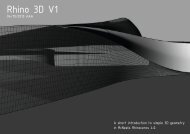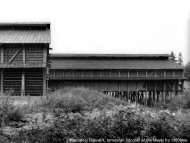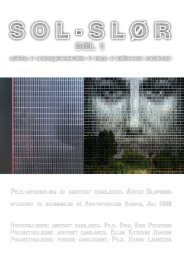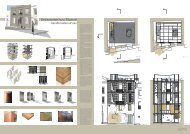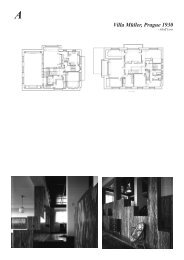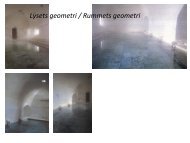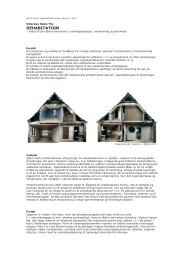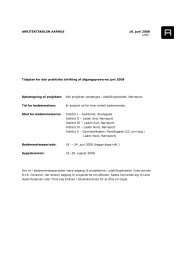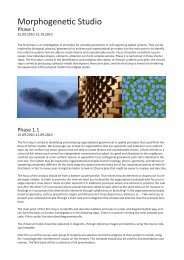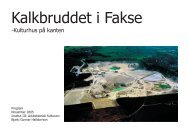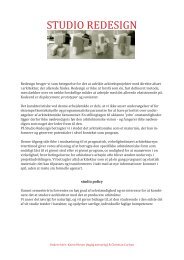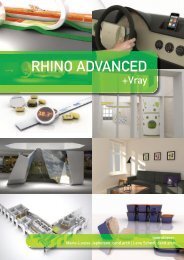Create successful ePaper yourself
Turn your PDF publications into a flip-book with our unique Google optimized e-Paper software.
Understanding V-<strong>Ray</strong> <strong>for</strong> <strong>Rhino</strong>’s Default Settings<br />
Rendering with the Default Settings<br />
The Default Options in V-<strong>Ray</strong> <strong>for</strong> <strong>Rhino</strong> are set up so that certain elements of V-<strong>Ray</strong> are already<br />
enabled. This is good because certain aspects that are specific to V-<strong>Ray</strong> are already configured with<br />
a proper setting.<br />
However there are a number of elements which are contributing to the final<br />
render, and it is important to know what they are so that unwanted results are avoided when we start<br />
adjusting the render options ourselves.<br />
Key Elements in the Default Settings<br />
There are three main elements specific to V-<br />
<strong>Ray</strong> that are creating some of the aspects of<br />
the default render.<br />
These elements are<br />
Indirect Illumination, the V-<strong>Ray</strong> Sun and Sky,<br />
and the V-<strong>Ray</strong> Physical Camera.<br />
These<br />
elements will be explained very briefly here,<br />
and you can reference other chapters in the<br />
book <strong>for</strong> a detailed explanation of these<br />
elements.<br />
Indirect Illumination is simply light that does<br />
not come directly a light source. In V-<strong>Ray</strong> this<br />
typically references two types of light; Global<br />
Illumination and Bounced light. Global Illumination is simply a dome of light that is emitted around<br />
the scene, and this can make setting up lighting very quick and easy. Bounced light is simply the<br />
light energy that is bounced from a surface. This bounced light is what allows V-<strong>Ray</strong> to create highquality<br />
renderings. For a more in depth explanation of Indirect Illumination please refer to page 66.<br />
The V-<strong>Ray</strong> Sun and Sky is physically accurate lighting model allowing <strong>for</strong> easy recreation of the<br />
affects of the Sun and Sky. This is an excellent tool <strong>for</strong> setting up exterior renderings with a sun.<br />
Due to the nature of the model in which the sun and sky are based off of, you will find that under<br />
standard conditions the sun and sky will be extremely bright. Because of this the V-<strong>Ray</strong> Physical<br />
Camera is used to expose the scene and brings the rendered image to a desirable level.<br />
The V-<strong>Ray</strong> Physical Camera is modeled after a real-world camera and can be used to expose a scene.<br />
In the real world, lighting is different in many situations, and because of this a photographer will use<br />
the capabilities of the camera to properly expose the image. Proper exposure means that the image<br />
is not overly bright or too dark. When creating renderings this gives us the opportunity to set our<br />
lighting as it would be in the real world (in this case it is the Sun and Sky) and adjust our camera<br />
settings until we achieve the desired result.<br />
The detailed explanations of the Sun and Sky and the physical camera are on page 79 and 82.<br />
V-<strong>Ray</strong> <strong>for</strong> <strong>Rhino</strong> 9



